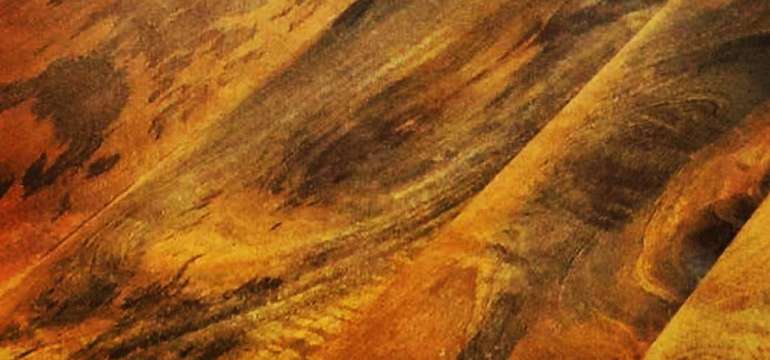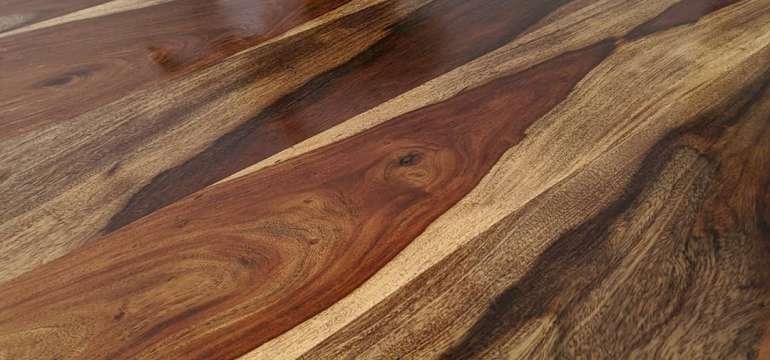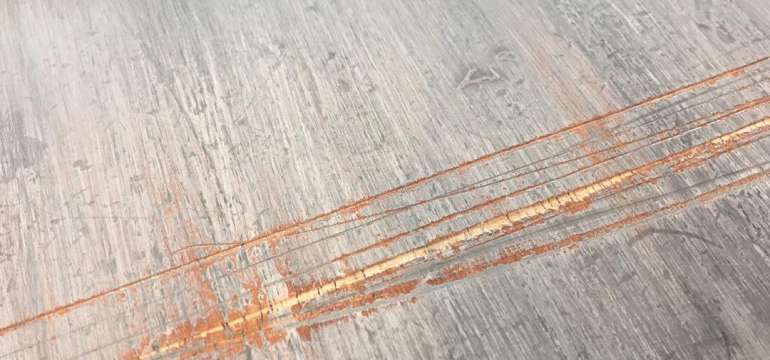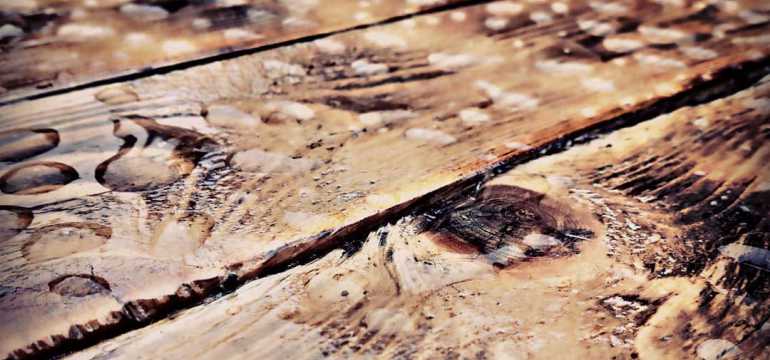Whether you are building a new entertainment center or an heirloom rocking chair, many woodworkers want to find the perfect wood. They may hunt for traditional species like oaks and maples, the sort of woods that grow in their own backyard. Others like to branch out and explore what more exotic species can offer them. If you love the idea of using an exotic species of wood but don’t want to spring for teak, why not consider mango wood?
Mango wood is a durable and sustainable selection that gives you beautiful coloring, durability, and so much more. It is the perfect choice for making new furniture that can adorn your home for generations. Learn more about what this hardwood can offer you with this short guide.
What is Mango Wood?
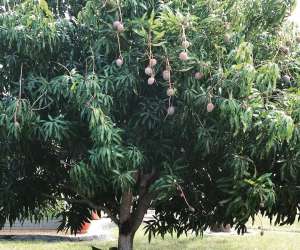 As you may have already guessed, mango wood comes from the fruit-bearing mango tree. This species of wood is native to the southeastern portions of Asia, but it has spread to various parts of the world. You can now find mango trees dotting the South Pacific islands, Mexico, and even parts of Australia.
As you may have already guessed, mango wood comes from the fruit-bearing mango tree. This species of wood is native to the southeastern portions of Asia, but it has spread to various parts of the world. You can now find mango trees dotting the South Pacific islands, Mexico, and even parts of Australia.
There are many different varieties of mango trees, but they are all in popular demand for the sweet fruit they bear. Unfortunately, their ability to bear lots of fruit tends to slow down as they reach their maturity. This leads many farmers to cut the tree down and plant new ones in its place. In the past, the remains of the mango tree may have been burned or left out in the elements to decay naturally.
Now, many people turn to mango wood for the beautiful markings it contains. Making furniture out of this type of wood is extremely popular because of swirling grain and beautiful golden coloring. Some cuts of the wood will have a slightly pink hue to them. No matter what specific color you receive, all of the mango wood will slowly get darker as it gets older. If it is exposed to more sunlight, it may bleach.
Some pieces may even have beautiful black streaks that set them apart from the more traditional brown coloring you find in mango wood. This comes from fungus and insect attacks that occur during the tree’s living years. Don’t worry, though. The visual reminders of these nuisances do not hurt the integrity or the durability of the wood itself. They just add to the character of the overall wood.
Grain patterns range from straight to curly depending on the particular cut of the wood. The grain itself is extremely dense, lending it the look of more exotic wood. Most people look at mango wood and have a difficult time telling it apart from the more popular teak.
If you don’t love the natural look of mango wood, you do have a few options for changing its appearance. This wood is known to accept stains and waxes relatively easily, allowing you to quickly change the color to something more acceptable. You can also add some extra polish just to showcase the natural grain while protecting the wood to the best of your ability.
Mango Wood Durability
Is mango a hardwood? Furniture makers often want to know more about mango wood durability before committing to a large project. It is true that mango wood is indeed a hardwood, but it is still relatively soft and pliable. Transforming it into a beautiful piece of heirloom furniture is something that can be done with relative ease for an experienced professional.
Professional carpenters often use a rating system known as the Janka scale to rate the hardness of the woods they use in their projects. This scale measures how much pressure it takes to imbed a small steel ball into the surface of the wood.
Most people find that woods like red oak and white oak are about as hard as they really need. These woods offer durability and can withstand the test of time without easily denting and showing wear and tear. Both of these species have Janka ratings that hover around 1300.
If you want to know more about how durable mango wood can be, understanding its Janka rating is the most crucial aspect. It has a score of just under 1100, which demonstrates that it can hold up to some wear and tear. It may not be as hard as some of the more traditional woods used for furniture-making, but this shouldn’t stop you from using it. The relative softness of the species can be excellent for making furniture because the wood is pliable without sacrificing durability.
Water-Resistance
Are you interested in building furniture that you can use on your patio or outdoor living space? Many of the more popular wood species do not mix well with moisture. After being exposed to rain and water, they tend to warp and bow. Mango wood may still be susceptible to some moisture over a long period of time, but it is a bit more water-resistant than other species.
In fact, the wood itself is actually prone to becoming dehydrated and cracking. Depending on the use of your item, you may find that you need to polish it or find another means of restoring water into the wood on a regular basis. This can get worse if you live in a particularly cold climate or leave your wood outside during the wintertime. It is advised that you bring your mango wood furniture indoors during cold spells to prevent damage to the wood.
If you choose to leave your furniture outside, you should be aware that mango wood does change colors with exposure to sunlight. It is notorious for bleaching in sunlight and losing the rich golden-brown color that draws so many people to it.
Mango vs. Other Hardwoods
Before you decide on the perfect wood for your next project, you should really have some idea of how mango wood compares to other popular hardwood species. For centuries, people have used oak and maple wood to build their furniture and homes. Is it worth making the switch to mango wood?
Oak and maple are still beautiful options for your projects. However, they do take longer to grow, which cuts into their sustainability. Consider how long it takes for an oak tree to reach full maturity. It may take close to 100 years for it to mature, whereas a mango tree will reach up to 100 feet tall in just fifteen short years. When you compare mango vs. oak, it is easy to see that mango wood is the more sustainable choice.
A similar comparison can be made between mango vs. maple. The two kinds of wood have a very similar visual appearance, but mango wood still grows faster. It is also a bit more pliable than maple wood, making it perfect for shaping into furniture, musical instruments, and other items.
Another of the more popular comparisons among hardwoods is how mango compares to teak. Teak is a sought-after look that comes with a hefty price tag. It is considered to be a more vulnerable species of wood because it does not rebound nearly as quickly as the environmentally-friendly mango wood.
Many woodworkers are turning to mango vs. teak because it offers a similar visual appearance but with a much lower price tag and more sustainability.
Sustainability
If you are trying to weigh the pros and cons of selecting mango wood for your next project, one of the things you should really consider is its sustainability. Everyone is doing more research on how they can improve the environment and do their part to contribute to a better world.
Knowing that the wood you choose is a sustainable option is a tangible way to make sure that you are not contributing to a vulnerable species disappearing from the earth.
Today, there is an extremely high demand for the sweet fruit that comes from these trees. There are groves filled with mango trees all over the world. As these trees are growing, they produce plenty of fruit for the farmers who own the land. However, their production decreases significantly and will eventually stop altogether when they reach full maturity.
Farmers cannot have a tree taking up valuable space on their land if it is not going to produce results. There simply is not enough space for them to have beautiful groves full of mango trees that do not bring in any income. As a result, they have to cut these trees down and plant new ones in their place.
The new trees take about fifteen years to reach full maturity. They grow significantly faster than many of the more traditional woods used for carpentry. It is sustainable and seems to have a steady supply that will last for years to come.
Of course, this steady supply of mango wood comes with another major benefit. Because it is plentiful, mango wood is typically less expensive than some other hardwoods. This is particularly true when comparing it to more exotic hardwood species like teaks and cherries.
Choosing the Right Hardwood
You may have to head out to a specialty shop to get your hands on a piece of this beautiful mango wood. However, it is well worth the extra effort it takes to track down this type of wood from your local lumberyards.
In the end, it gives you a beautiful piece of furniture with dense grain and gorgeous natural coloring that will withstand the test of time. If you need to create a piece of furniture that can hold up to some wear and tear while being sustainable, mango wood could just be the perfect fit for your project.
- How to Cut Lexan - September 25, 2020
- Mineral Spirits vs. Mineral Oil - September 25, 2020
- Shellac vs. Polyurethane - September 24, 2020

